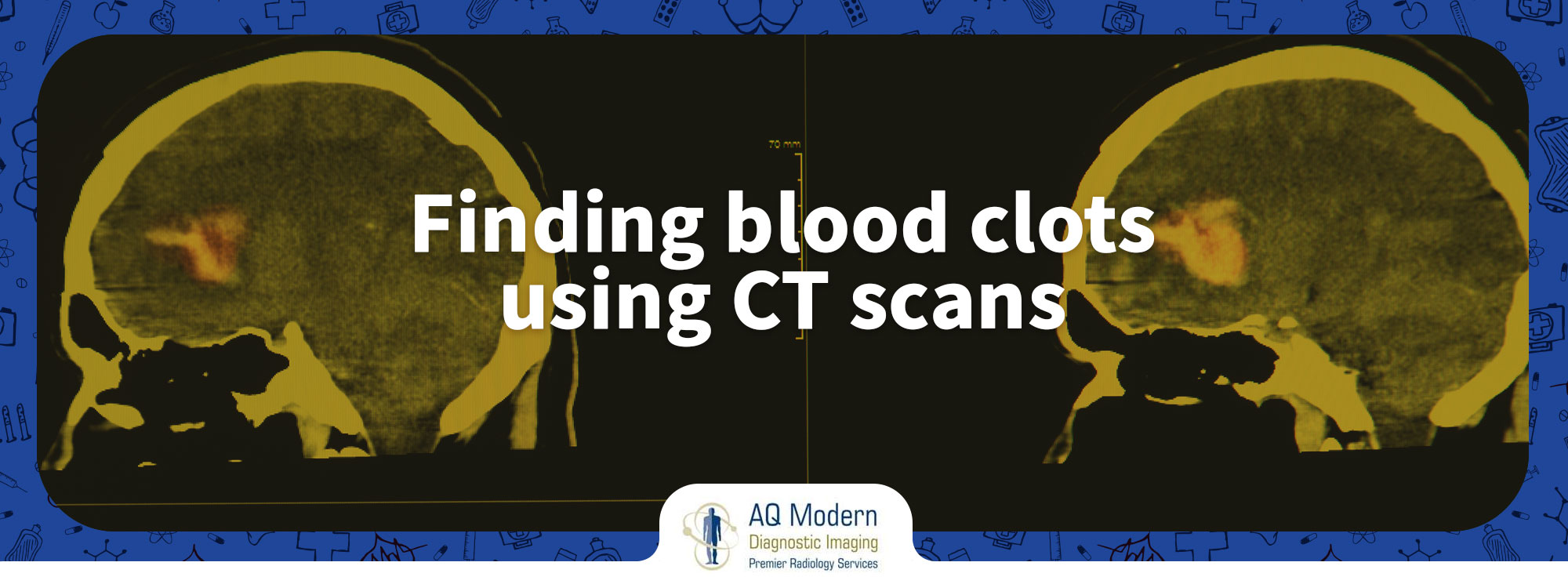Blood is supposed to flow freely in our bodies. However, when it doesn’t, it becomes a problem. All blood clots are not problematic because it depends on the location of their formation and what they are blocking.
It can help heal wounds, prevent infections, and initiate healing after an injury. However, that form in the blood vessels poses a serious risk. It can lead to serious health problems, and a scan for blood clots becomes essential for its identification and treatment.
What are Blood Clots:

Blood flows through our veins and arteries; however, when it becomes a semi-solid mass of blood, it’s known as a blood clot and poses a health risk. It can occur throughout our body in the lungs, heart, arms and legs, kidneys, or abdomen. Some blood clotting is considered normal, whereas too much of it can lead to serious health complications. They form due to an injury to help stop the bleeding.
They can be stationary or move to another part of the body. Those who break away and move to another part of the body are called embolism blood clots. Where it may develop and what it blocks to determine the severity of the health condition.
Blood clots that form in the arteries are called arterial clots, and they cause immediate symptoms. These can cause various problems as their development prevents the oxygen supply from reaching vital organs. They develop in the veins and are called venous clots. Their development is slow and takes place over time.
Symptoms:
Some common symptoms of blood clots include swelling, pain, or tenderness, depending on where it develops. On the arms or legs, you may experience pain and redness, while if it develops in the abdomen, a person may develop stomach pain and experience diarrhea or vomiting.
Blood clots formed in the heart can make a person feel severe chest pain, light-headedness, sweating, shortness of breath, pain in the upper body, or nausea. Similar symptoms may be experienced if the blood clot is in the lungs, including shortness of breath and fever.
if it is develops in the lungs or heart can cause the person to cough up blood. If you have a clot in the brain, common symptoms can include feeling pain in the body, blurry vision, dizziness, and headaches. If you experience any of these symptoms and suspect you have developed a blood clot, schedule a scan for blood clots.
Causes:
Blood clots that form without apparent reason, such as an injury, are determinantal to health and should be diagnosed through a blood clot test. These often occur due to an underlying condition or risk factor. Someone experiencing above mentioned symptoms should get themselves tests. Common risk factors that can lead to blood clots include:
• Extended sitting or bed rest
• Smoking
• Obesity
• trauma
• family history of developing blood clots
• autoimmune disorders
• Major surgery
• certain infections like hepatitis C, Lyme Disease, or HIV/AIDS
They can also form when they come in contact with certain particles in the blood vessel walls or skin. They shouldn’t, but if they do, it means the wall or skin is broken. These particles are contained in the waxy cholesterol plaques as well. If the plaque that forms in the arteries breaks, it can begin the clotting process. Most heart attacks and strokes occur due to the sudden burst of these plaques in the brain or heart.
How are Blood Clots Diagnosed

their symptoms can be a reflection of other health conditions as well. However, there are tests that help rule out other causes. An initial assessment is carried out to diagnose the severity of the condition and includes a physical examination and details of your medical history.
They can be diagnosed via blood tests. An ultrasound can also be conducted to get a clear view of the veins and the blood flow. Your physician may also recommend a CT scan for blood clots. CT scan imaging of the chest, head, or abdomen can reveal the presence of blood clots and other potential causes of the symptoms.
Other tests that can further facilitate the diagnosis include an MRA or V/Q scan. The physician may immediately order a blood clot test in an emergency where a person has already suffered a stroke or heart attack.
Treatment for Blood Clots

Treatment involves medication or surgery. The goal is to prevent the blood clot from breaking loose or getting bigger. A CT scan for it at the right time can prevent further damage, and the treatment can be started without delay.
Medication can prevent it from forming in the future, and they work by thinning the blood. In other cases, surgery may be performed where a long tube is used to deliver the medication directly to the clot so that it may dissolve.
If a person has blood clots in the legs, they may be given tight-fitting stockings that form pressure and reduce leg swelling, preventing it from developing.
In Conclusion
Blood clots that form in case of injury are beneficial as they prevent bleeding. However, in the brain, heart, or lungs they develop for other reasons and pose a serious health risk. They can be lethal if not diagnosed early and left untreated.
A CT scan for blood clots is essential for its diagnosis and treatment. There are several ways in which you can prevent blood clots. This risk of blood clot formation can be reduced by developing a healthier lifestyle. This includes engaging in regular physical activity, eating healthier foods, and maintaining a healthy weight.
It is also recommended to stop smoking and control medical health issues such as diabetes and high blood pressure. You should also consult with your physician and follow their recommendations to reduce the risk of blood clots.

